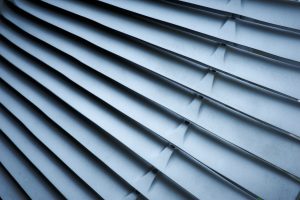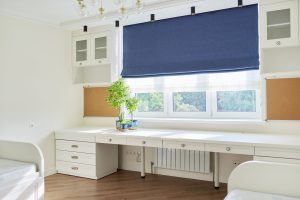Choosing the right blinds, shutters, and awnings can feel overwhelming, but it’s important to start by identifying your primary needs. Do you prioritize light control, privacy, or energy efficiency? Once you’ve defined your goals, think about how these window treatments will align with your room’s architectural features, color scheme, and furniture style. The materials you choose should not only match your aesthetic preferences but also fit your maintenance routine and durability requirements. Accurate measurements and proper installation are the final steps to guarantee a seamless and professional look. What factors should you consider next to make the best choice for your space?
Key Takeaways
– Assess the primary purpose: light control, privacy, or energy efficiency.
– Choose materials like wood, vinyl, or aluminum based on durability and maintenance needs.
– Match the style and color of treatments to your home’s architectural features and decor.
– Measure windows accurately, considering inside or outside mount options.
– Evaluate sunlight exposure and privacy needs based on window direction and room function.
Types of Window Treatments
When selecting window treatments, you can choose from a variety of options including blinds, shutters, and awnings, each offering unique aesthetic and functional benefits.
Blinds, available in materials like wood, aluminum, and fabric, provide a sleek and modern look. They’re perfect for controlling light and ensuring privacy. Vertical blinds work well for large windows and sliding doors, while horizontal blinds are ideal for smaller windows, offering precise control over light and visibility.
Shutters add a touch of elegance and durability to any room. Often made from wood or composite materials, they can be customized to fit any window shape. Their sturdy design provides excellent insulation and security, making them a long-term investment for your home. Plantation shutters, with their wide louvers, are particularly popular for their timeless appeal and ability to enhance both traditional and contemporary interiors.
Awnings, installed outside your windows, offer both style and practicality. They can be retracted when not in use, providing flexibility. Available in various fabrics and colors, awnings not only enhance the exterior aesthetic of your home but also protect it from harsh sunlight, reducing indoor temperatures and energy costs.
Assessing Your Needs
Understanding your specific requirements is essential for selecting window treatments that perfectly blend functionality with aesthetic appeal. Begin by evaluating the primary purpose of your blinds, shutters, or awnings. Do you need to control light, enhance privacy, or improve energy efficiency? Each function demands a different approach and style.
Next, consider the room’s architectural features and existing decor. Take note of color schemes, furniture styles, and overall ambiance. For instance, sleek, modern spaces might benefit from minimalist roller blinds, while traditional settings could be complemented by elegant wood shutters.
Think about the level of privacy you desire. Bedrooms and bathrooms might require treatments that offer maximum coverage, whereas living areas might benefit from a balance between light and privacy. Additionally, assess the direction your windows face. South-facing windows receive intense sunlight and might need treatments with UV protection.
Material Options
After identifying your specific needs, it’s equally important to explore the variety of material options available for blinds, shutters, and awnings to ensure they align with both functionality and style. The right material can impact durability, maintenance, and the overall aesthetic of your space.
Here are four common material options to explore:
- Wood: Ideal for a classic, elegant look. Wood is durable and provides excellent insulation but requires regular maintenance to avoid warping and damage from moisture.
- Vinyl: A cost-effective and low-maintenance alternative. Vinyl is resistant to moisture and easy to clean, making it a great option for kitchens and bathrooms.
- Aluminum: Known for its strength and modern appeal. Aluminum blinds and shutters are lightweight, resistant to rust, and perfect for high-humidity areas.
- Fabric: Offers versatile design choices and adds a soft touch to your decor. Fabric awnings and blinds can be easily customized but may require more frequent cleaning to prevent fading and staining.
Style and Design
Embracing your personal aesthetic, style, and design choices for blinds, shutters, and awnings can transform any space into a cohesive and visually appealing environment. Start by considering the architectural style of your home. For instance, if you have a modern home, sleek, minimalistic blinds with clean lines can complement your space beautifully. On the other hand, traditional homes may benefit from the classic charm of wooden shutters or Roman blinds.
Color plays an important role in design. Neutral shades can create a serene and timeless look, while bold colors make a statement and add vibrancy. Patterns and textures also contribute to the overall aesthetic. Striped or floral patterns can introduce a playful or elegant touch, respectively.
Think about the functional aspects as well. For instance, Venetian blinds allow you to adjust light levels precisely, adding both style and utility. Similarly, retractable awnings can provide shade when needed and retract to maintain an open, airy feel.
Incorporating these elements thoughtfully ensures your blinds, shutters, and awnings aren’t only functional but also enhance the beauty of your living spaces. Choose pieces that reflect your personality and harmonize with your existing decor for a truly unified look.
Measuring and Installation
To guarantee your blinds, shutters, and awnings fit perfectly and function smoothly, start by meticulously measuring your windows and outdoor spaces. Accurate measurements are essential for achieving a seamless look and best performance. Begin with a steel tape measure for precision and note your measurements in both width and height.
Here’s a simple checklist to make sure you don’t miss any details:
- Inside or Outside Mount: Decide if your window treatments will be mounted inside the window frame or outside. This decision affects your measurements.
- Measure Width at Three Points: Measure the width at the top, middle, and bottom of the window or space. Use the smallest measurement for inside mounts and the largest for outside mounts.
- Measure Height at Three Points: Similarly, measure the height at the left, center, and right. Use the smallest height for inside mounts and the largest for outside mounts.
- Double-Check Measurements: Always double-check your measurements to avoid costly mistakes.
Once you’ve gathered accurate measurements, follow the manufacturer’s installation guidelines to ensure a professional, polished appearance. Proper installation not only enhances the aesthetic appeal but also guarantees the functionality and longevity of your blinds, shutters, and awnings.
Frequently Asked Questions
How Do Blinds, Shutters, and Awnings Impact Energy Efficiency?
Blinds, shutters, and awnings enhance energy efficiency by minimizing heat transfer. You’ll notice reduced cooling costs in summer and better heat retention in winter, creating a comfortable, aesthetically pleasing environment while conserving energy.
What Maintenance Is Required for Different Types of Window Treatments?
Wooden shutters need regular dusting and occasional polishing, while fabric blinds require vacuuming and spot cleaning. Aluminum blinds demand simple wiping, contrasting with the meticulous care needed for retractable awnings to avoid mold and mildew.
Are There Eco-Friendly Options for Blinds, Shutters, and Awnings?
Yes, you’ll find eco-friendly options like bamboo blinds, FSC-certified wooden shutters, and awnings made from recycled materials. These choices not only enhance your space aesthetically but also reduce your environmental footprint to a great extent.
How Do I Childproof My Window Treatments?
Did you know that over 17,000 children are injured annually by window blinds? Opt for cordless blinds or shutters, ensuring there are no dangling cords. Install secure, child-safe mechanisms to maintain an elegant and safe environment.
Can I Automate My Blinds or Shutters for Smart Home Integration?
You can automate your blinds or shutters seamlessly for smart home integration. Choose systems compatible with your smart home hub. Look for options with sleek designs and smooth, quiet motors to enhance both functionality and aesthetics.
Conclusion
You’ve got this! By choosing the perfect blinds, shutters, or awnings, you’ll transform your space into a sanctuary of beauty and functionality.
Imagine a room where light dances just right, privacy is absolute, and energy efficiency is at its peak. Your windows won’t just look good—they’ll become the crown jewels of your home.
So, measure meticulously, select materials wisely, and install with precision. Your dream space awaits, more stunning and cohesive than ever before!
















